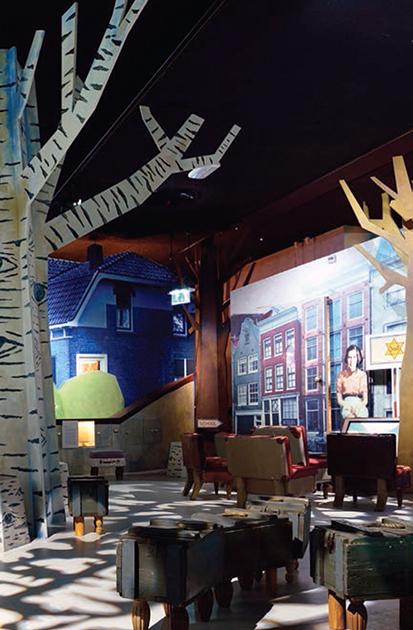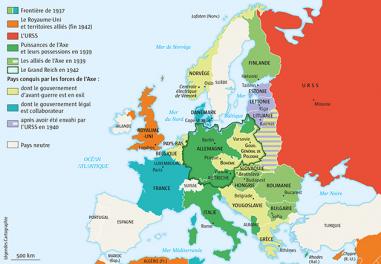Resistance in the Netherlands
The Dutch Resistance Museum (Verzetsmuseum) in Amsterdam is a window onto the history of the German occupation and the Nazi regime in the Netherlands. Since 2013, children have been able to learn about the Netherlands Resistance at a junior museum especially for children aged 9 and above.

Founded in 1984 by former members of the Dutch Resistance, the Dutch Resistance Museum opened its doors the following year, then in 1999 moved to new premises in the centre of Amsterdam. From that date forth, visitor numbers have risen steadily, with 106 000 in 2018, including 23 000 schoolchildren and more than 60 000 foreign tourists. The museum offers free tours with audio guides in seven languages, including English. Most visitors to the site are impressed with the quality of the displays, which stimulate reflection.
In order to understand the Dutch Resistance, it is important to remember that the Netherlands was neutral in the First World War. None had experienced war, not even the older generations, parents or grandparents. When the Germans invaded the country in 1940, the population went into shock. After five days of fighting, the Dutch army was crushed, and the queen and her government went into exile in Britain. From that point on, the Nazis established a severe regime of occupation. Initially, the occupier behaved decently towards the population, in order to rally the Dutch National Socialist Movement (NSB) in the context of “German fraternity”. It was against this backdrop that the Resistance would progressively increase in size.
The museum’s permanent exhibition charts the development of the Resistance throughout those years, with a focus on the dilemmas facing the population. “Should one adapt or cooperate? Or instead, fight and boycott? Denounce? Help out?”, when the grip on society becomes too strong. All of these questions form part of an exhibition design in which portraits and personal itineraries alternate according to the chosen options. In 2005, the museum was enriched by another exhibition, about the experiences of the population of the former Dutch colony of the Dutch East Indies (present-day Indonesia), then occupied by Japan, with portraits of Resistance fighters.
In 2013, the museum was extended to house a new permanent exhibition for children from the age of nine: the Dutch Resistance Museum Junior has since received many awards. It charts the true stories of Eva, a little Jewish girl; Jan, whose parents were members of the Resistance; Nelly, whose parents belonged to the NSB; and Henk, whose family lived through the events and adapted to the circumstances of wartime.
Visitors step into an old-fashioned lift, which takes them back in time to the Netherlands of the 1940s. They step out onto a square bordered by a shop, a school and four houses, each of which tells the story of one of the four characters by means of a short animated film. Each story is told in the first person, in a child’s voice, so that children are able to relate to them more easily. They are then invited to step inside the houses, where an interactive display allows them to further explore the children’s stories by listening to archive recordings and handling a range of objects, including drawers and spyholes. There are also games to play. By the end of the display, Eva, Jan, Nelly and Henk are old people, like they are today. On an interactive screen, they tell how the war continues to play a big part in their lives, and explain what the children of today can learn from their wartime experiences.
Read more
Open daily, weekdays 10 am to 5 pm, weekends 11 am to 5 pm
Articles of the review
-
The file

Resistance in Europe
More than 70 years on from the Second World War, the resistance continues to be an endless source of speculation for experts. It is often studied and understood in the light of regional and national history. Over the past few years, there has been a shift in scale to try to zero in on a Europe-wide ...Read more -
The event
75th anniversary of the Normandy landings
Every year since 1944, Normandy remembers the Allied soldiers who landed on its beaches to fight for the liberation of France and Europe. The 75th anniversary of the landings, on 6 June 2019, is a particularly symbolic date. ...Read more -
The interview

Rémi Praud
Rémi Praud is director of the Liberation Route Europe Foundation, which offers a trail across Europe in the footsteps of the Allied soldiers. In this 75th anniversary year of Liberation, the European partners are preparing to receive visitors in their droves. ...Read more

